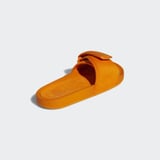Keep comfy. Read More Who What Wear
Wellness
This Is the It Haircut Tons of Celebs Have Been Endorsing Lately
Future cut inspiration just ahead. Read More Who What Wear
10 Ways to Refresh Your Summer Stay-at-Home Staples For Fall
No one quite knew at the beginning of COVID-19 just how long we'd be required to stay indoors, let alone how much we'd come to rely on our loungewear. With just four weeks remaining in the summer, it's pretty safe to say that the majority of us - especially those of...
I’m Starting to Think That Maybe Fast Fashion Isn’t The Only Thing Contributing to Wear-Once Culture
I attended a conference earlier this year hosted by Slow Factory - an organization dedicated to improving sustainable literacy in fashion - called Climate Positivity at Scale. The conference was aimed at fashion insiders, with the goal of getting us to think of...
When I Saw Ariana Grande’s Rhinestone Face Mask, I Told My Own, “Thank U, Next”
Ariana Grande would have the coolest fashion face mask known to mankind. Just a few weeks after Jennifer Lopez debuted her sparkly Katie May design on a bike ride, Ariana followed suit in a rhinestone, holographic mask from Get Stonned, a brand that sells a wide range...
Alexa Chung’s Hairdresser Just Told Me the Best Haircut for My Face Shape
The first cut in months has to be a goodie. Read More Who What Wear
Birks Releases Rainbow Necklace Inspired by Quebec Community Movement
Canadian fine jeweller and retailer Birks has released a new rainbow necklace with a special message born out of Quebec during quarantine. As people were encouraged to remain at home during the height of the COVID-19 pandemic earlier this year, Quebec residents began...
In Lockdown Our Wardrobes Hold Powerful Memories
In the absence of anything else to do during lockdown, I embarked on more sorting than previously seemed possible. Books were alphabetized, cupboards cleared, walls painted, new laundry baskets bought, and boxes full of miscellaneous wires and old phone chargers put...
Pharrell Williams’s New Adidas Slides Look Like Perforated Socks, and My Feet Are Happy
Pharrell Williams has been collaborating with Adidas since 2014, around the time he reportedly dreamed up these colorful slides that provide maximum comfort. Of course, we all know they're not the only slides out there for summer 2020, but we expect the hype over...









